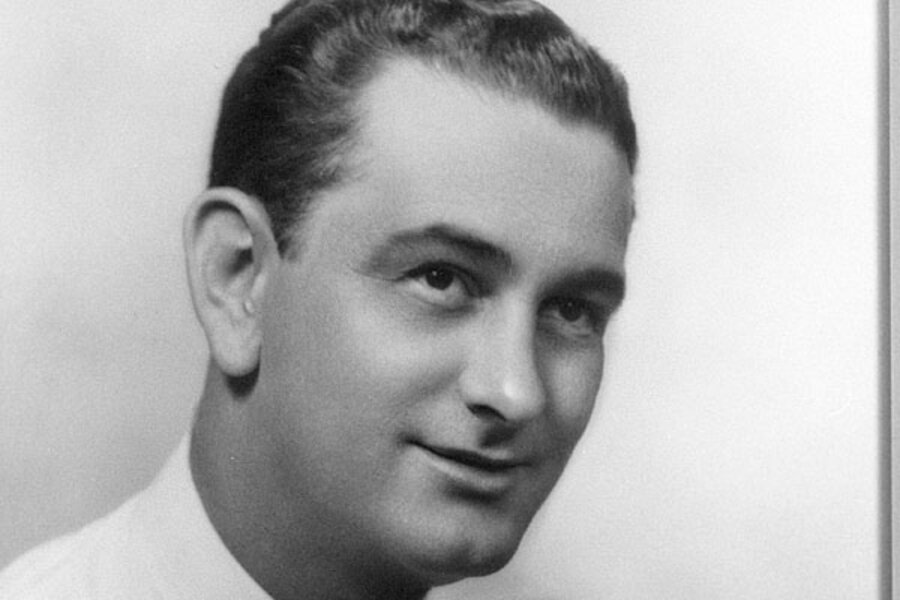LBJ love letters: Romance in a time without Twitter
Loading...
| Austin, Texas
Days after the congressional aide met the University of Texas history and journalism graduate in Austin, he boldly proposed marriage.
Claudia Alta Taylor, the 21-year-old rancher's daughter known to her friends as "Bird," was intrigued but thought Lyndon Johnson's proposal was much too impulsive. Her clearly smitten suitor, however, was persistent.
"It is an important decision," he wrote to her in one of the nearly 90 love letters the pair exchanged during their 10-week courtship in 1934. "It isn't being made in one night ... but your lack of decision hasn't tempered either my affection, devotion or ability to know what I want."
She replied that his proposal and repeated insistence "sort of put me on the spot, didn't it, dear? All I can say, in absolutely honesty, is — I love you, I don't know how everlastingly I love you — so I can't answer you yet."
The correspondence between the 26-year-old future president and the woman the world would come to know as Lady Bird are available for public review for the first time starting Thursday — Valentine's Day — at the LBJ Presidential Library at the University of Texas at Austin.
A few of the letters were previously released but not the entire collection, which also will be posted online.
"We've had several requests from researchers to release these," Claudia Anderson, the library's supervisory archivist, said Wednesday. "It just seemed like a good time to do it."
Unlike brief and instantaneous Twitter or Facebook posts or cryptic phone texts, the letters — most multiple pages — reflect a time when the handwritten note was the chief form of communication.
"Dearly Beloved," Taylor begins one, before reconsidering her salutation. "This sounds like a sermon — it isn't."
He signs them, "Lyndon," or "Lyndon Baines." She signs, "Bird." One closes, "Do you still love me? Devotedly, Bird."
Her stationery carries that name, given to her by a caretaker nurse who described her as "pretty as a lady bird." Her handwriting is very neat in thin black script.
His, also in script with thick dark black ink, is on letterhead from Washington's Dodge Hotel, where he lived while working as an aide to U.S. Rep. Richard Kleberg of Texas. Other letters are on Kleberg's office stationery, sent simply to "Miss Bird Taylor, Karnack, Texas," where her home didn't have a telephone. The envelope carries 6 cents postage, but some he sent by air mail or special delivery.
None of the letters is dated, but merely provides a day of the week. Fortunately for archivists, Taylor saved the envelopes — Johnson didn't — as well as the letters, allowing researchers to assemble what they believe is a chronological order.
In one letter, Taylor defends her indecision on marriage, saying "everybody is so constantly urging" her to wait, that two months isn't long enough to know him. "My head aches," she writes.
Anderson said Johnson is "certainly romantic in these letters in that he is wooing her, he's trying to impress her and he makes various arguments why they should get married."
"I would not really call these letters sentimental. He wants a commitment from her. ... His letters express that," Anderson said. "They are fascinating."
She said the letters reflect characteristics that would come to be synonymous with the couple: "His impatience, his passion for helping people; her interest in conservation and nature."
He talks about getting jobs for people, his own job in Washington and complains how she doesn't write every day. Hers progress from, "I'm not so sure about this," to, "I adore you."
Ten weeks after they met, Johnson showed up in November 1934 at Lady Bird's widowed father's home in Karnack in northeast Texas, to press for an answer. Even as they made the 350-mile drive to San Antonio, she wasn't sure she would "commit matrimony," as Mrs. Johnson described it later.
But the couple married Nov. 17, 1934, four days after the last letter in the collection, at St. Mark's Episcopal Church in San Antonio.
Johnson dispatched a friend, Dan Quill, who was postmaster in the Alamo city, to get a ring for the ceremony. It came from a Sears store and cost $2.50.
Lady Bird Johnson spent 34 years in Washington as her husband's political career took him to the chief executive's office after President John F. Kennedy was assassinated in 1963. Lyndon Johnson was elected the following year to a four-year term, but declined to seek re-election in 1968 amid growing civil unrest and challenges from his Democratic Party over his Vietnam War policies.
He and Lady Bird retired to their ranch and Austin, and Lyndon Johnson died in 1973. Mrs. Johnson died in 2007 at age 94.
___
Online:
LBJ Presidential Library,
Copyright 2013 The Associated Press.







